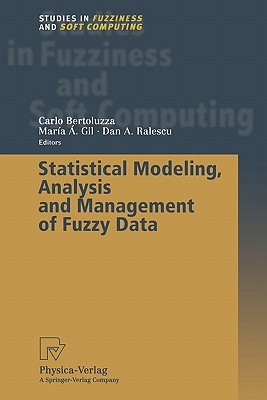
- We will send in 10–14 business days.
- Publisher: Physica Verlag
- Year: 2010
- Pages: 309
- ISBN-10: 3790825018
- ISBN-13: 9783790825015
- Format: 15.6 x 23.4 x 1.7 cm, minkšti viršeliai
- Language: English
- SAVE -10% with code: EXTRA
Statistical Modeling, Analysis and Management of Fuzzy Data (e-book) (used book) | bookbook.eu
Reviews
Description
Statistical Modeling, Analysis and Management of Fuzzy Data, or SMFD for short, is an important contribution to a better understanding of a basic issue -an issue which has been controversial, and still is though to a lesser degree. In substance, the issue is: are fuzziness and randomness distinct or coextensive facets of uncertainty? Are the theories of fuzziness and random- ness competitive or complementary? In SMFD, these and related issues are addressed with rigor, authority and insight by prominent contributors drawn, in the main, from probability theory, fuzzy set theory and data analysis com- munities. First, a historical perspective. The almost simultaneous births -close to half a century ago-of statistically-based information theory and cybernetics were two major events which marked the beginning of the steep ascent of probability theory and statistics in visibility, influence and importance. I was a student when information theory and cybernetics were born, and what is etched in my memory are the fascinating lectures by Shannon and Wiener in which they sketched their visions of the coming era of machine intelligence and automation of reasoning and decision processes. What I heard in those lectures inspired one of my first papers (1950) An Extension of Wiener's Theory of Prediction, and led to my life-long interest in probability theory and its applications to information processing, decision analysis and control.
EXTRA 10 % discount with code: EXTRA
The promotion ends in 22d.23:42:38
The discount code is valid when purchasing from 10 €. Discounts do not stack.
- Publisher: Physica Verlag
- Year: 2010
- Pages: 309
- ISBN-10: 3790825018
- ISBN-13: 9783790825015
- Format: 15.6 x 23.4 x 1.7 cm, minkšti viršeliai
- Language: English English
Statistical Modeling, Analysis and Management of Fuzzy Data, or SMFD for short, is an important contribution to a better understanding of a basic issue -an issue which has been controversial, and still is though to a lesser degree. In substance, the issue is: are fuzziness and randomness distinct or coextensive facets of uncertainty? Are the theories of fuzziness and random- ness competitive or complementary? In SMFD, these and related issues are addressed with rigor, authority and insight by prominent contributors drawn, in the main, from probability theory, fuzzy set theory and data analysis com- munities. First, a historical perspective. The almost simultaneous births -close to half a century ago-of statistically-based information theory and cybernetics were two major events which marked the beginning of the steep ascent of probability theory and statistics in visibility, influence and importance. I was a student when information theory and cybernetics were born, and what is etched in my memory are the fascinating lectures by Shannon and Wiener in which they sketched their visions of the coming era of machine intelligence and automation of reasoning and decision processes. What I heard in those lectures inspired one of my first papers (1950) An Extension of Wiener's Theory of Prediction, and led to my life-long interest in probability theory and its applications to information processing, decision analysis and control.


Reviews